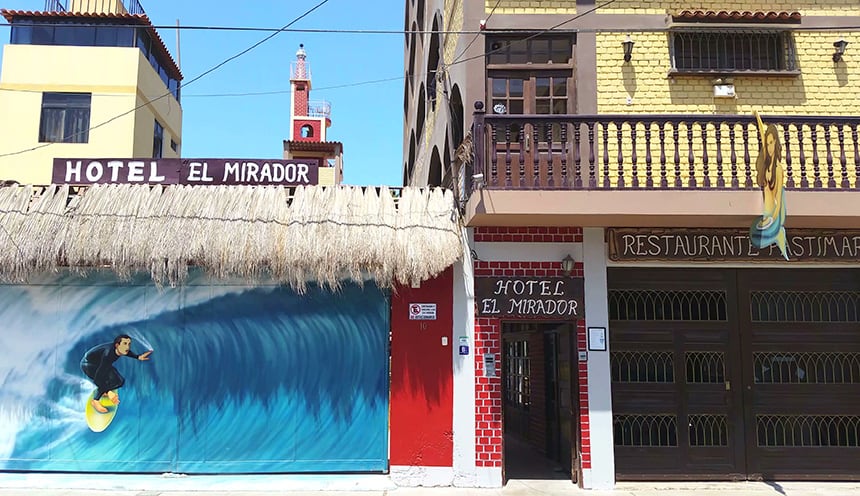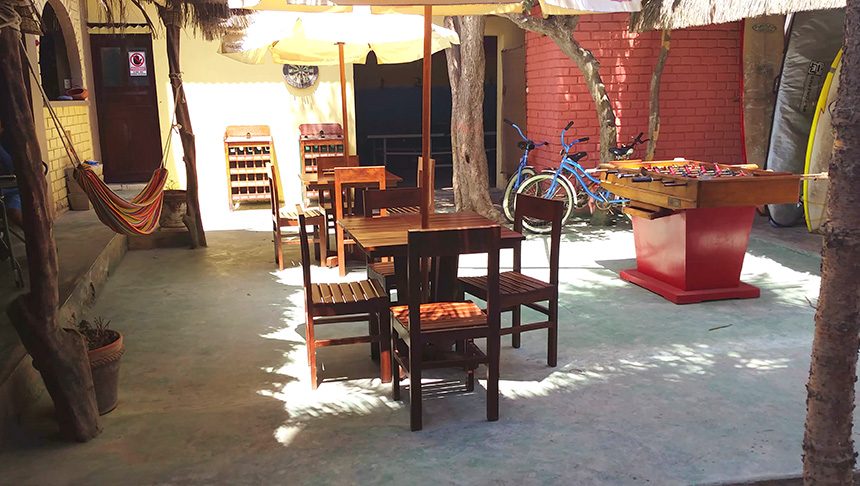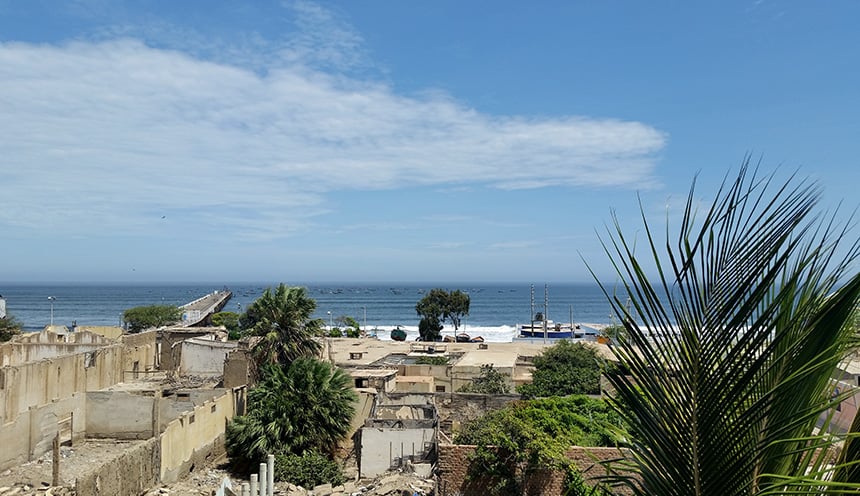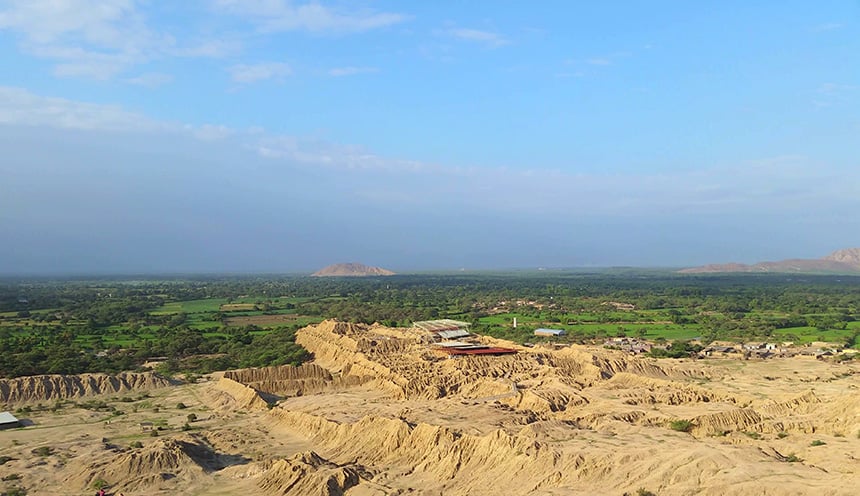Welcome to La Libertad!
Temples, pyramids and cities of mud that survive inclement weather: Chan Chan, Huaca del Sol y la Luna, el Brujo are some of the most remarkable destinations in the province of La Libertad. It offers exquisite colonial architecture in the beautiful mansions that line its streets, living culture with deeply-rooted customs like fishing on Caballitos de Tortora (the traditional reed rafts of the northern coast), and renowned beaches that attract surfers from around the world.
It is the birthplace of the seductive “marinera”, the national dance of Peru. La Libertad, the very picture of ancient nobility.
Sights
Main attractions in the city
Martín de Astete established the plaza as the city centre under the orders of Diego de Almagro. The main part of the plaza contains the La Libertad (freedom) monument, a marble sculpture in the baroque style by the German artist Edmundo Müller.
Built in 1666, the site holds valuable works of art, particularly canvasses from the Cuzco school and altarpieces.
It holds items linked to religion, carvings and paintings from the colonial period, which include the following two highlights: “La negación de San Pedro,” (St Peter’s Denial) and the portrait of St John the Baptist. The roof decorated with polychrome beams and the crypt with murals of the apostles give the building a unique character.
Its construction began in 1680 and ended in 1708. It was built with adobe, brick and wattle and daub. The entrance is framed by two towers with triangular pilasters. Inside, the arches, pilasters and pillars all portray the Trujillan tradition of the 17th century.
The imposing gateway of this ancient plazuela (small plaza) indicates the road to the mountains. Restored in 1986, the site contains the ancient fountain that was originally located in the Plaza Mayor. The water trough that supplied the manor houses in the colonial era can be seen.
Built in 1759, this is one of the best architectural complexes in the city. It is composed of a temple and a two-cloister convent.
Dating back to the 17th century, the high altar is made from gold leaf and the pulpit is in the baroque style.
An ancient cloister built by the Franciscan Fathers during the 18th century, with a neo-classical altar atrium. Piura declared its independence at the church, under the blessing of the Franciscan saints, on January 4, 1821. It was declared a national monument in 1969 and 1980.
Originally built in 1536, the building was destroyed by an earthquake in 1619 and rebuilt in 1634. The architectural site was built in the main part of a block and not on a corner, which is unusual for this type of monuments. The main facade is in the baroque style: instead of belfries, it has a pair of bellcotes. The site holds works of great value, including the main altar (which originally belonged to the Society of Jesus church) and the side altars with paintings from the 17th century.
Built in the 19th century, it is an example of neoclassical civil architecture. Highlights include the columns, window bars and Italian marble statues. It is currently the headquarters of the Club Central.
Considered to be the most representative example of the architectural style of Trujillo City. The entrance, in the baroque style, features various color tones, a rococo façade and two lions (which is why it is also known as the “House with the Lion Doorway”). They complement the Mannerist style of the murals, the Imperial windows and the neo-Baroque balcony.
Site of the Central Reserve Bank. The house is neo-classical in style and has been converted into a museum displaying gold ornaments from the Chimú culture, the desk of Simón Bolívar and furniture belonging to the Vice-Royalty and Republic eras.
It presents the transformation of toys over time, from the pre-Hispanic era to the 1950s. Toys from different parts of the world are on display, reflecting socio-cultural traditions, fashions and values.
It displays various species of local Peruvian fauna, including birds, fish, reptiles, insects and camelids.
The house where Víctor Raúl Haya de la Torre was born. It attempts to disseminate the thoughts and work of this illustrious political figure. The building has five permanent exhibition halls, four temporary exhibition halls and a temporary virtual exhibition hall, as well as a central patio, a library, a multi-purpose room and a conference room.
Main attractions beyond the city
The largest pre-Hispanic mud city in the Americas. Declared a World Heritage site by UNESCO in 1986. Chan Chan is thought to have been the capital of the Chimú kingdom, originally extending over more than 20 km² from Huanchaco Port to the Campana hills. Archaeologists believe that it housed over 100,000 workshops, streets, walls and pyramid-shaped temples. Its massive walls are decorated with geometric figures, stylized animals and mythological creatures. The tour is supplemented with a visit to the site’s museum.
The Huaca del Sol (Temple of the Sun) served as a political-administrative centre and the Huaca de la Luna (Temple of the Moon) as a ceremonial centre. The Urban Zone is located between the two and composed of houses, large avenues, alleys, passages and plazas, confirming the high levels of political, religious, economic and social organisation in the Moche culture. The Huaca de la Luna is made of temples built on top of one another as a result of the different stages of the Moche era. On some walls, beautiful polychrome murals can be seen, whose figures clearly depict the god Ai-apaec. Within the temple, archaeologists have discovered a tomb with over 40 sacrificed warriors. Currently, tourists can only visit the Huaca de la Luna.
Inaugurated in June, 2010. Organized into three thematic halls, the structure makes reference to the building tradition of the Moche culture.
An adobe pyramid, which is of great importance because its construction is believed to have occurred at the start of the Chimú culture and at the end of the Tiahuanco–Wari culture, between the 10th and 11th centuries. It is estimated to be 1100 years old. The building has a quadrangular shape and walls decorated with tall reliefs that depict zoomorphic and anthropomorphic figures. The name of the temple originates from one of these figures, a two-headed being with innumerable feet, similar to a dragon. Researchers believe that one of the roles of the site was ceremonial (potentially linked to rites in honour of the rainbow and other natural phenomena related to fertility).
According to legend, Prince Tacaynamo and his entourage landed in Huanchaco 800 years ago, founding the first Chimú dynasty. “Caballitos de totora” (reed horses), traditional rafts used by fisherman on the north coast of Peru since the pre-Hispanic era, still navigate its waters. It is one of the most popular Peruvian beaches for surfing enthusiasts.






Leave a Review